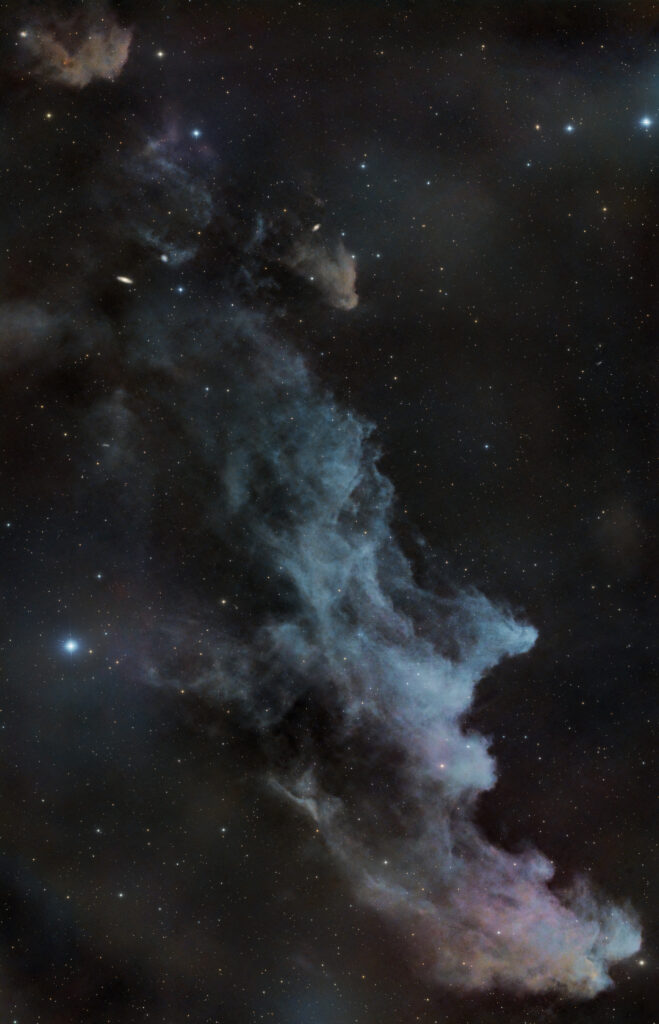Since time immemorial, large fires have been lit in elevated places on the night of 30 April to 1 May as protection against evil demons and witches. According to ancient pagan customs, this is a way to protect oneself from the dark forces unleashed during this strange night. But we can't drive one witch away.
For it does not belong to the earthly sphere and our powers are not sufficient for it. Moreover, seeing it is not easy. She is weak, ethereal, more like a fairy.
If we want to see it, we must set our sights deep into space, all the way to the bluish star Rigel. The brightest star in the constellation Orion most of the time, and the sixth brightest star in the sky, some eight hundred light years away from us and one of the blue supergiants, it is seventeen times more massive than our sun and shines eighty-five thousand times brighter. If we were to put it in the place of our sun, it would shine in the sky as a dazzlingly bright sphere thirty-five degrees in angular diameter.
The star Rigel is surrounded by several interstellar clouds, which it illuminates with its brightness. The most famous of these is the nebula NGC 1909, also known as the "Witch's Head". The fine dust in this nebula scatters the star's already blue light into an even bluer shade.
Radio observations have shown the existence of large molecular clouds associated with the formation of new stars inside the nebula. This idea is supported by observations of young stars that have not yet reached the main sequence, as well as the presence of T-Tauri stars. The nebula itself is most likely located at the very edge of a supergiant bubble of molecular hydrogen, blown away by the massive stars of the Orion OB1 association. It is the collision of the cloud with the surrounding interstellar material that causes the rapid formation of new stars.
Although Orion guides us through the whole story, the nebula lies in the neighbouring constellation Eridanus, albeit in close proximity. In the same way, the hydrogen bubble bears the name of both constellations, the "Orion-Eridanus Superbubble". It occupies an area of nearly twenty-five degrees in diameter in the sky. We have already become somewhat familiar with the Witch's Head Nebula and its surroundings. It's time we also got to know the author of the picture. It is the Slovak sky photographer Ján Gajdoš. He took the picture of the "witch" in Bela nad Cirocha, Slovakia.
This nebula is also known as IC 2118, which was discovered by Max Wolf on 16 January 1891. This object was later identified with the nebula NGC 1909, discovered by William Herschel on 20 December 1786. Herschel had mistakenly noted in his entry that the nebula lay to the east of the star Rigel, but in fact it lay to the west.
"Certainly, on behalf of all the fans of the night sky, the jury and the Czech Astronomical Society, which sponsors this competition, we can thank the author for the image, congratulate him on his victory and wish him many more amazing images of the hidden beauty of the night sky," said for the jury of the CMA Marcel Bělík from the Observatory in Úpice.

Author: Ján Gajdoš
Name: Witch's head NGC 1909
Location: Bela nad Cirochou, SR
Date: 4 to 7 November 2024
Sensor: QHY 8L-C
Optics: GSO Newton astrograph 150/600 (150/450 F3), Starizona Nexus 0.75x comacorrector
Installation: SkyWatcher NEQ6Pro
Description: Software: NINA, Astro pixel processor, GraXpert, Pixinsight, Adobe photoshop 209×240 sec. Lights gain15, offset113 at -10°C, master bias, 90 flats, master darks, master darkflats
You can see the winning images in each month and more information at http://www.astro.cz/cam/ .
Czech Astronomical Society/ gnews.cz - RoZ



